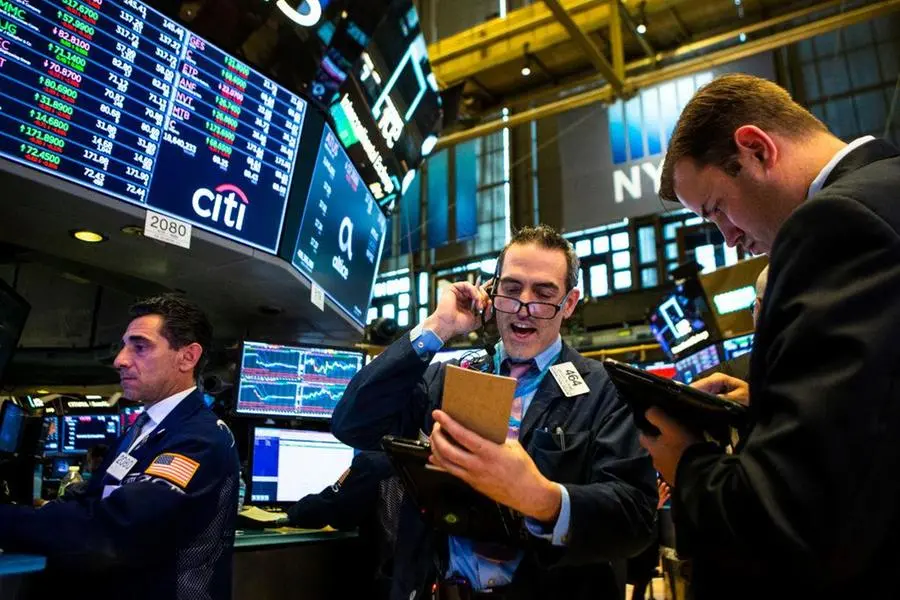PHOTO
(The opinions expressed here are those of the author, a columnist for Reuters.)
ORLANDO, Fla. - If the Federal Reserve is using 1994 as a template for its likely aggressive monetary tightening ahead, then emerging market investors can be forgiven for feeling nervous given what followed around the globe back then.
Refinancing needs in developing economies are at record highs. Inflation is high and rising despite many emerging central banks pre-empting Fed rate rises over the past year, and so too are government debts as a share of gross domestic product.
To be sure, emerging markets' external position is much stronger today than it was in the mid-1990s - debts are mostly denominated in local currency, far fewer exchange rates are pegged rigidly to the dollar, and many central banks are sitting on huge piles of foreign cash reserves.
But the sharp rise in U.S. bond yields and a surging dollar are putting the squeeze on emerging economies' growth and overall debt sustainability. Emerging market assets have been under pressure for some time.
The surge in U.S. real, or inflation-adjusted, yields is particularly noteworthy. As real returns on U.S. bonds turn positive again, western investors fearful of currency risk, capital loss and inflation feel more comfortable locating in the relative safety of Treasuries, and capital gets sucked out of high octane emerging markets.
The 10-year U.S. real yield has leapt towards zero from around -1.10% in the past six weeks. Patrick Curran, senior economist at Tellimer, says markets may still be underpricing how much upside it still might have.
"Gone are the days where you could just pencil in 2% inflation forecasts and price out your real rates from there," Curran says, noting that headline U.S. inflation is the highest in 40 years, 10-year inflation expectations are the highest in 25 years, and emerging market inflation rates are spiking too.
PERSISTENT SCARRING
U.S. money markets now expect the Fed to raise interest rates by 50 basis points at each of its next three meetings for a total of 275 basis points this year, culminating in a 'terminal' rate next summer that could exceed 3.5%.
That would be similar to 1994-95, where the Fed's 300-bps tightening cycle in a 12-month period included multiple 50-bps moves and even a 75-bps increase.
That bond-crushing, quick-fire tightening under the guidance of then Fed Chair Alan Greenspan successfully managed that rare twin feat of snuffing out inflation while avoiding recession.
But what was a soft landing for the U.S. economy turned out to be far bumpier for emerging markets. A stronger dollar and higher U.S. yields helped spark the 1994-95 'Tequila' crisis in Mexico, which then brewed into the 1997 Asian crisis, which then fueled the 1998 Russian and 1999 Brazilian crises.
No one is suggesting an exact repeat. But the squeeze now comes as the International Monetary Fund this week noted "persistent scarring" from the pandemic which means emerging economies will fail to regain their pre-COVID growth path for several years.
The IMF also warned that EM remains vulnerable to a tightening of global financial conditions. An "abrupt and rapid" increase in U.S. interest rates could lead to "significant spillovers" to some emerging economies, especially the smaller and weaker 'frontier' markets.
$9 TRILLION ROLLOVER
According to Goldman Sachs, U.S. financial conditions are the tightest since November 2020, and emerging market conditions are close to being the tightest since 2008. The tightening this year has been driven almost exclusively by rising bond yields and widening credit spreads.
Financing needs are high. Total EM public debt stands at around 66% of GDP, according to the IMF, virtually doubling since 2008. That debt explosion was serviceable only because global rates collapsed to virtually zero after the 2008 crisis.
But with growth set to remain subdued, the IMF expects emerging economies' debt-to-GDP to continue rising steadily towards 75% of GDP by 2027.
Analysts at the Washington-based Institute of International Finance note that EM bonds and loans across all sectors maturing by the end of next year total around $9 trillion. Even if around 85% of that is in local currency, well over $1 trillion is exposed to rising U.S. rates.
Emre Tiftik, the IIF's director of sustainability research, points out that countries relying more on foreign currency borrowing will be hit hard. Middle- and low-income economies are particularly exposed.
"Also, many EM sovereigns have started to borrow at short-term maturities, increasingly using bills. This short-term debt needs to be turned over in a rising interest environment, which puts a major burden on fiscal balances."
(The opinions expressed here are those of the author, a columnist for Reuters.)
Reuters





















